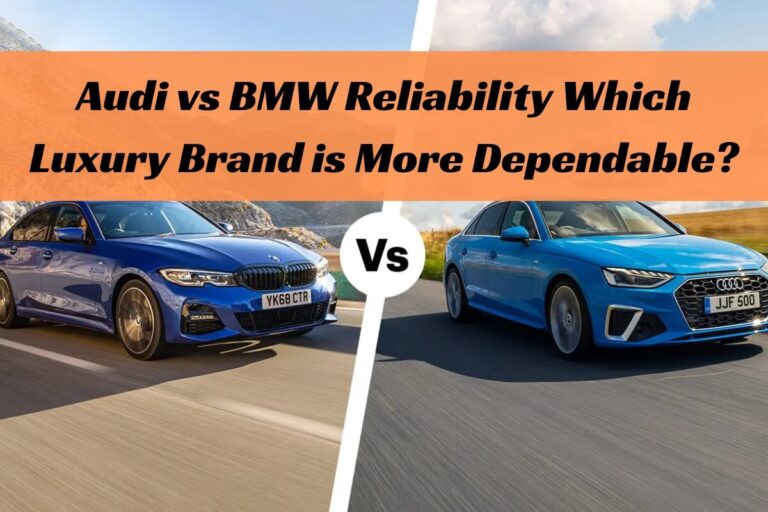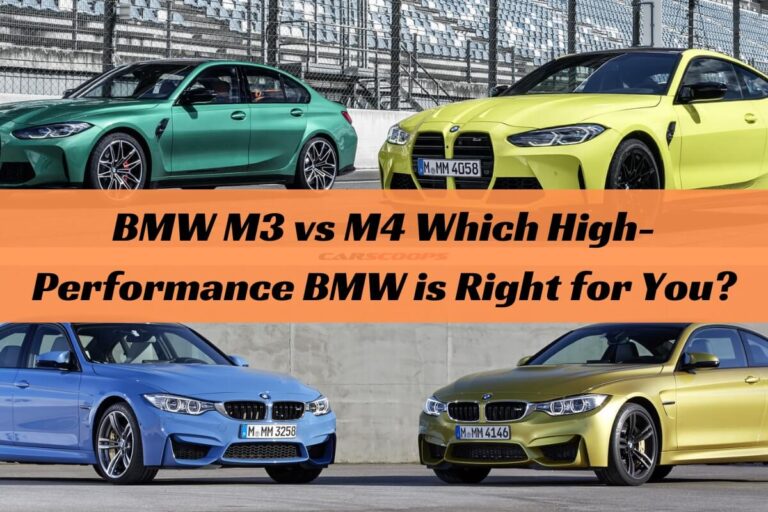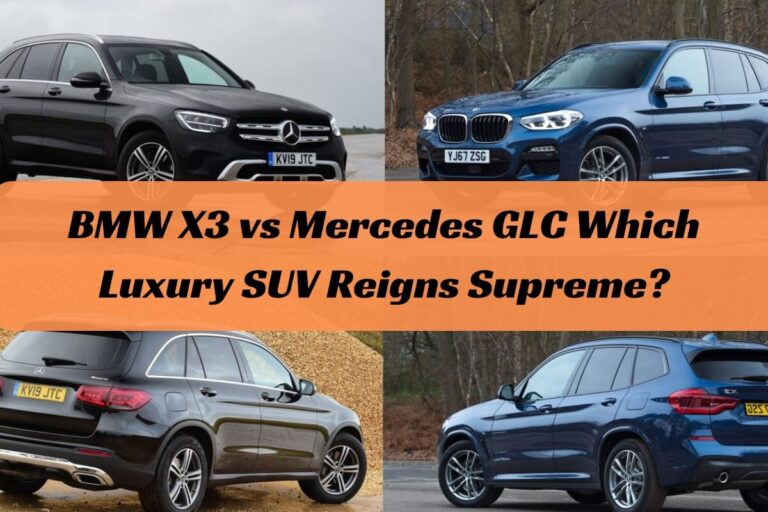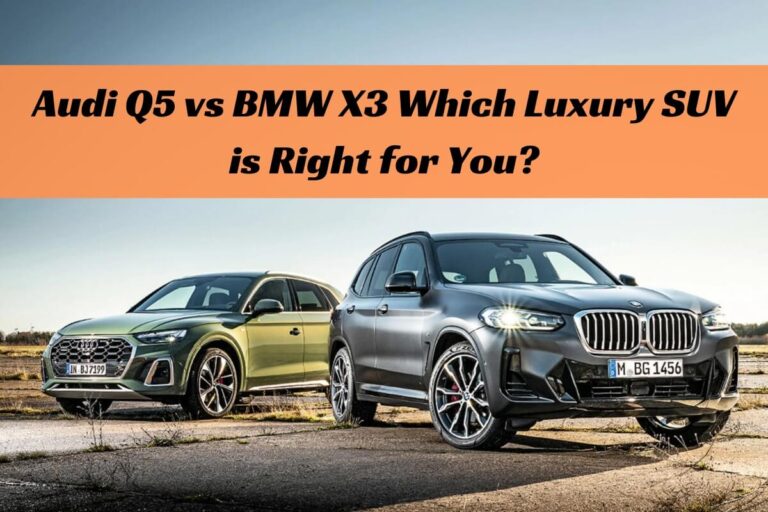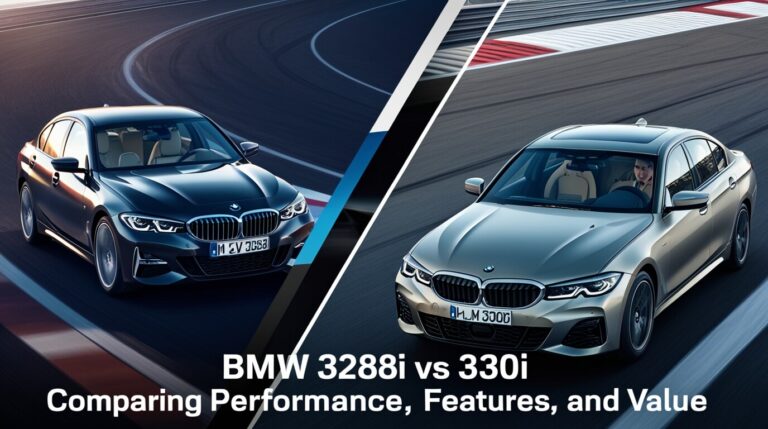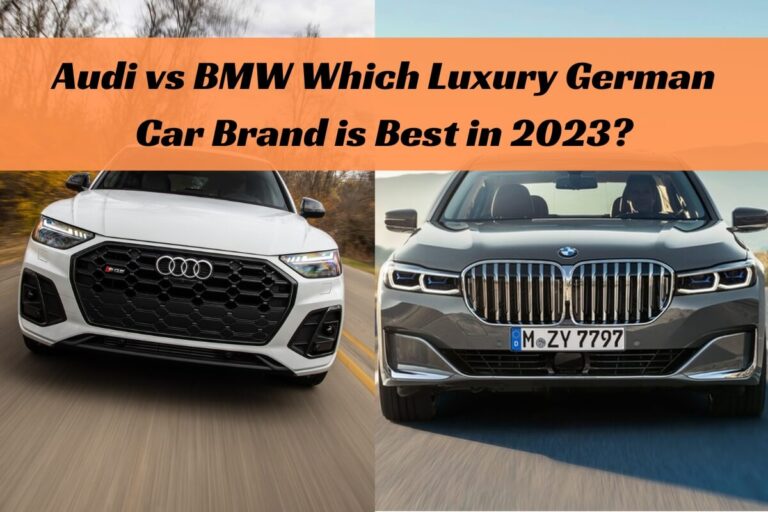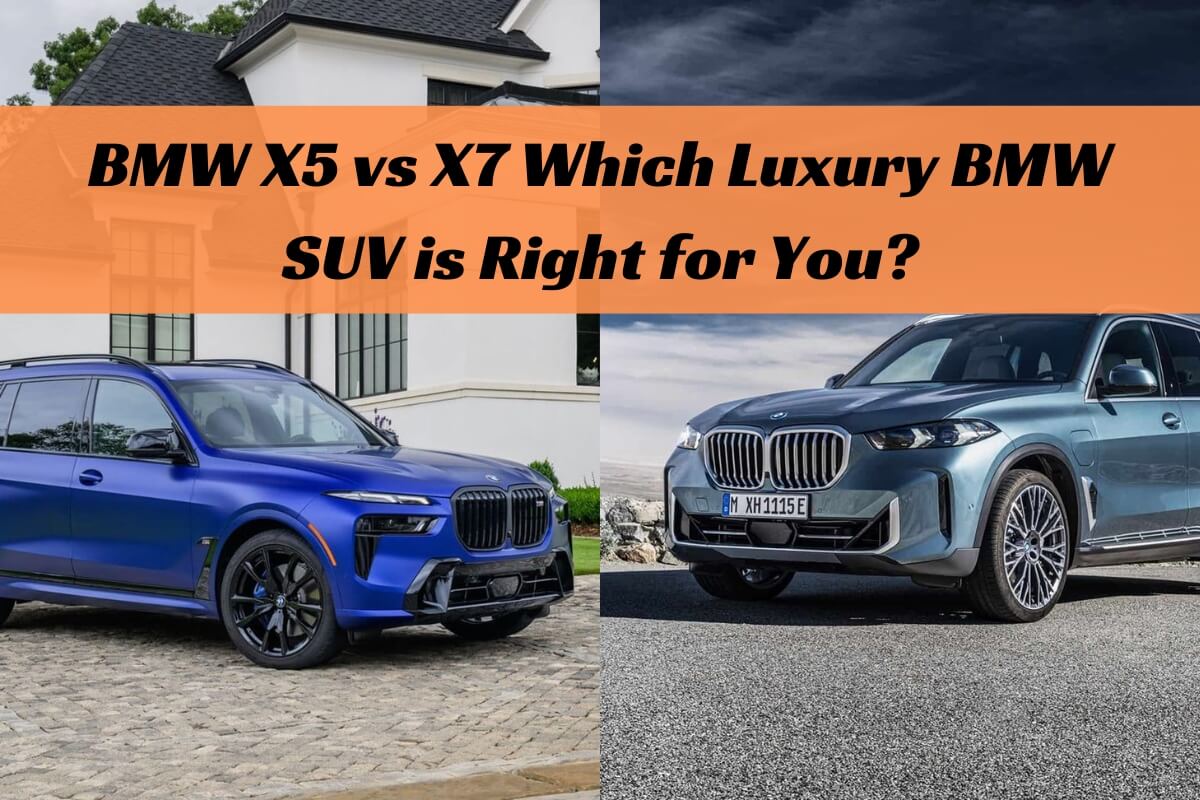
If you’re in the market for a premium luxury SUV from BMW, you’ve likely found yourself comparing the X5 and X7 models. Both offer impressive performance, high-end features, and the unwavering build quality that makes BMWs so desirable. However, there are some distinct differences between these two SUVs that could sway your decision one way or the other.
So which one is the better choice for you – the BMW X5 or the BMW X7?
The BMW X5 is a sportier and more agile SUV option, offering seating for up to 7 passengers. The X7 is the larger, more premium choice with even more interior room and standard 3-row seating for 7. While they share some similarities, the X7 provides more passenger and cargo space but also comes with a higher price tag.
In this detailed comparison, we’ll take an in-depth look at the key differences between the BMW X5 and X7 in terms of exterior dimensions, interior space, performance specifications, efficiency ratings, safety features, trim levels, and pricing. By the end, you’ll have a clear understanding of which model best aligns with your needs and lifestyle.
Overview of the BMW X5 and X7
The BMW X5 kicked off the luxury SUV segment for the brand when it debuted back in 1999. Now in its fourth generation, the X5 has continued evolving into a true sport utility vehicle that blends performance, utility and premium amenities. It’s been a cornerstone of BMW’s X-Series SUV lineup for over two decades.
The BMW X7, on the other hand, is a much newer addition that was just introduced in 2018. As BMW’s largest SUV offering, the X7 is positioned as the brand’s flagship model in the SUV segment, designed to provide maximum interior room and cargo space without sacrificing the dynamics BMW vehicles are known for.
Both the X5 and X7 are assembled at BMW’s production facility in Spartanburg, South Carolina. But while they share some similarities in styling and engineering, there are also significant differences between them.
Dimensions and Exterior Design
When it comes to overall size, it should come as no surprise that the BMW X7 has a larger footprint than the X5. However, the extent of the difference may actually surprise you.
Interior Space
In terms of total interior passenger volume, the BMW X7 measures 146.3 cubic feet compared to 112 cubic feet in the X5. This gives the X7 a much roomier cabin, especially when you factor in the third row.
Speaking of the third row, this is a key differentiator between the models. The BMW X5 is available as a two-row SUV with seating for 5, or you can opt for a third-row seat to increase capacity to 7 passengers. However, this third row is quite cramped for adults.
In the X7, you get three rows of seating as standard equipment, providing a very generous amount of room even for third-row adult passengers. If desired, you can also configure the X7 with optional second-row captain’s chairs instead of a bench, reducing the total seating to 6 but improving comfort for those second-row passengers.
When it comes to cargo volume behind the seats, the BMW X7 simply dwarfs the X5’s capacity:
- X5 Cargo Volume: 33.9 cu ft (behind third row), 72.3 cu ft (behind second row), 92.3 cu ft (with rear seats folded)
- X7 Cargo Volume: 48.6 cu ft (behind third row), 90 cu ft (behind second row), 120.7 cu ft (with rear seats folded)
Exterior Measurements
The larger interior volume of the X7 is matched by its bigger exterior footprint compared to the X5:
- X5 Length: 194.3 inches
- X7 Length: 203.3 inches
- X5 Width: 78.9 inches
- X7 Width: 78.5 inches
- X5 Height: 68.7 inches
- X7 Height: 71.4 inches
While the X7 is over 9 inches longer than the X5, it’s actually slightly narrower by a few tenths of an inch. The X7 also rides about 2.5 inches taller.
The X7 has a longer 122.2-inch wheelbase versus 117.1 inches for the X5, contributing to its greater interior room. However, the X5 has a higher 8.7-inch ground clearance compared to the X7’s 8.3 inches.
In terms of overall curb weight, the X7 is the heavier of the two, checking in between 5,370-5,675 lbs depending on trim level. The X5 is lighter at 4,758-5,170 lbs.
Exterior Styling
From a design perspective, both models embody BMW’s latest styling language with their large kidney grilles, angular headlights and sculpted body lines providing an upscale, muscular presence on the road.
However, the smaller X5 has a slightly sportier, more aggressive look compared to the X7’s emphasis on elegant yet imposing luxury. The X7’s bold vertical kidney grilles and chrome accents convey an undeniably premium vibe.
Both SUVs can be outfitted with various wheel designs, including performance-oriented options from the BMW M division. Tire sizes range from 19-22 inches for the X5 and 20-22 inches for the X7.
What’s Under the Hood? Engine Options and Performance
Whether you opt for the BMW X5 or X7, you’ll have your choice of potent turbocharged engines providing strong acceleration and passing power. Exact specifications differ, but here’s an overview of the key powerplants:
Engine Options
BMW X5:
- 3.0L Turbo I6 (335 hp, 330 lb-ft) – sDrive40i, xDrive40i
- 4.4L Turbo V8 (523 hp, 553 lb-ft) – X5 M
- 4.4L Turbo V8 (600 hp, 553 lb-ft) – X5 M Competition
- 3.0L Turbo I6 Hybrid (389 hp combined) – X5 xDrive45e
BMW X7:
- 3.0L Turbo I6 (335 hp, 330 lb-ft) – xDrive40i
- 4.4L Turbo V8 (523 hp, 553 lb-ft) – M60i
- 4.4L Turbo V8 (612 hp, 590 lb-ft) – Alpina XB7
As you can see, the X5 offers a plug-in hybrid option, which the X7 currently does not. However, BMW could introduce an electrified X7 powertrain in the future.
At the top of the performance spectrum are the mighty X5 M Competition and Alpina XB7 models, both equipped with amped-up versions of BMW’s twin-turbo 4.4L V8 cranking out over 600 horsepower.
Acceleration and Top Speed
Naturally, with more powerful engines, you get quicker acceleration times:
- X5 xDrive40i: 0-60 mph in 5.3 seconds
- X7 xDrive40i: 0-60 mph in 5.8 seconds
- X5 M: 0-60 mph in 3.8 seconds
- X5 M Competition: 0-60 mph in 3.7 seconds
- X7 M60i: 0-60 mph in 4.5 seconds
- Alpina XB7: 0-60 mph in 4.0 seconds
Both models have an electronically-limited top speed of 130 mph with the standard engines. This increases to 155 mph for the X5 M and Alpina XB7, or 177 mph for the X5 M Competition when equipped with the M Driver’s Package.
Drivetrain and Towing
All X5 and X7 models come standard with BMW’s xDrive intelligent all-wheel drive system to provide optimal traction in a variety of conditions. The silky-smooth 8-speed automatic transmission is a mainstay throughout the lineup.
Maximum towing capacity favors the larger X7:
- BMW X5: Up to 7,200 lbs
- BMW X7: Up to 7,500 lbs
So while both are capable of pulling a decent-sized trailer or boat, the X7 gets the edge when it comes to maximum towing prowess.
Interior Design, Features and Technology
On the inside, both the BMW X5 and X7 showcase the exceptional craftsmanship and attention to detail you’d expect from a premium German luxury brand. However, there are some key differences in their cabin designs and features.
Seating Configurations
As previously noted, the X5 comes standard as a two-row, five-passenger SUV, with an optional third row that boosts capacity to seven. The X7, on the other hand, comes solely with three rows of seating for seven passengers right out of the gate.
Both models can be outfitted with premium upholstery options like leather, SensaTec faux leather, or upgraded Vernasca leather in various color schemes to create an even more upscale ambiance. You’ll also find plenty of real aluminum, wood and chrome accents adorning the cabins.
For the ultimate in second-row comfort in the X7, you can opt for the luxury captain’s chairs in place of the standard bench seat, dropping the total seating capacity to six but providing an exceptional experience for those two passengers.
Infotainment and Connectivity
On the technology front, both SUVs are available with BMW’s iDrive 7.0 infotainment system featuring a 12.3-inch digital instrument cluster and either a 12.3-inch or 10.25-inch center touchscreen display, depending on the trim level.
You get wireless Apple CarPlay and Android Auto smartphone integration, in-dash navigation, a Wi-Fi hotspot, and BMW’s Intelligent Personal Assistant as standard fare. A slick digital key option allows you to use your smartphone as a vehicle key.
For an even more immersive experience, you can upgrade to BMW’s Live Cockpit Professional which includes a larger 12.3-inch central display along with a full-color Head-Up Display projected onto the windshield.
An optional Bowers & Wilkins Diamond Surround Sound system provides concert-like audio quality in both models.
Luxury and Convenience Features
Both the X5 and X7 can be loaded up with all the luxury appointments you could want in a premium SUV, including:
- Panoramic glass moonroof
- Heated and ventilated front seats
- Heated rear seats
- Luxury rear seat package (X7 only with heated/cooled cupholders, rear sunshades)
- Automatic trunk/liftgate
- Soft-close automatic doors
- Remote engine start
- Wireless charging pad
You’ll find an abundance of premium materials like wood, leather and aluminum trims throughout the cabins, with the X7 benefiting from a slightly more upscale look and feel given its flagship positioning.
While the X5’s interior is certainly nothing to scoff at in terms of luxury amenities, the X7 just takes things to an even higher level of indulgence and refinement befitting its larger size and price point.
Fuel Economy Ratings
Despite their robust power and performance capabilities, the BMW X5 and X7 both deliver decent fuel efficiency for the luxury SUV segment, aided by technologies like auto start/stop, brake energy regeneration and aerodynamic body designs.
For the gasoline-only powered variants, the EPA rates the X5 and X7 as follows:
BMW X5:
- xDrive40i: 21 mpg city / 25 mpg highway
- X5 M: 13 mpg city / 18 mpg highway
- X5 M Competition: 13 mpg city / 18 mpg highway
BMW X7:
- xDrive40i: 19 mpg city / 24 mpg highway
- M60i: 15 mpg city / 20 mpg highway
As you can see, the smaller and lighter X5 has a slight advantage in fuel economy compared to the larger X7, especially with the potent M models. If maximum efficiency is a top priority, your best bet is the X5 xDrive45e plug-in hybrid which achieves 51 MPGe combined.
In real-world driving, you can expect a range of around 450-500 miles for the X5 xDrive40i and 400-450 miles for the X7 xDrive40i with their 21.9-gallon and 21.6-gallon gas tank capacities, respectively.
Safety Ratings and Driver Assistance Features
Both the 2023 BMW X5 and 2023 BMW X7 have been named an IIHS TOP SAFETY PICK+ when equipped with the available front crash prevention technology.
In NHTSA crash testing, the 2023 X5 earned a 5-star overall safety rating, comprised of 5 stars in the frontal crash and side crash tests, and 4 stars in the rollover test. The 2023 X7 has not yet been rated by NHTSA.
Beyond the robust safety constructions, both SUVs come standard with a host of advanced driver assistance technologies:
- Forward collision warning
- Automatic emergency braking
- Blind spot monitoring
- Rear cross-traffic alert
- Lane departure warning
- Automatic high beams
Available as part of the Driving Assistance Pro Package are even more sophisticated systems like:
- Extended traffic jam assistant
- Evasive steering assist
- Emergency stop assistant
- Front cross-traffic alert
- Parallel and back-in parking assistance
To further enhance visibility and safety, front and rear parking sensors are standard, along with a backup camera. You can opt for the Parking Assistance Package which adds a 360-degree camera system, remote self-parking capability, and a drive recorder.
Trim Levels and Pricing
The 2023 BMW X5 comes in the following trim levels:
- X5 sDrive40i: $61,600
- X5 xDrive40i: $64,100
- X5 xDrive45e: $66,400
- X5 M: $107,700
- X5 M Competition: $118,900
For the larger 2023 BMW X7, you have these variants:
- X7 xDrive40i: $79,500
- X7 M60i: $108,700
- Alpina XB7: $148,800
As you can see, choosing the X7 over the X5 with an equivalent powertrain like the xDrive40i results in a roughly $15,000 premium. The gap narrows a bit at the higher end between the X5 M and X7 M60i, but the ultra high-performance Alpina XB7 pushes well into the six-figure range.
Of course, prices can escalate quickly as you start adding options and packages to either model. But even loaded up, the BMW X5 maintains a more attainable luxury pricing position compared to the flagship X7.
Frequently Asked Questions
What are the main differences between the BMW X5 and X7?
The primary differences are exterior size, interior passenger and cargo space, and pricing. The X7 is BMW’s largest SUV, measuring over 9 inches longer than the X5 while providing standard three-row seating and significantly more cargo room. It also has a more premium, luxurious interior befitting its flagship status but commands a higher price tag than the X5.
Which is bigger – the BMW X5 or X7?
The BMW X7 is the larger of the two SUVs, with an overall length of 203.3 inches compared to 194.3 inches for the X5. It also has more passenger volume, cargo space behind all rows of seating, and a longer wheelbase.
Does the BMW X5 or X7 get better gas mileage?
The smaller, lighter BMW X5 achieves slightly better EPA fuel economy estimates compared to the X7. For example, the X5 xDrive40i gets 21 mpg city and 25 mpg highway versus 19/24 mpg city/highway for the X7 xDrive40i.
Can you get a third row in the BMW X5?
Yes, the BMW X5 is available with an optional third row that increases seating capacity from the standard 5 passengers up to 7. However, the third row is quite cramped for adults. The X7 comes standard as a three-row, seven-passenger SUV.
Which has more cargo space – X5 or X7?
The BMW X7 has significantly more cargo space behind all rows of seating compared to the X5:
- X7 Cargo Volume: 48.6 cu ft behind third row, 90 cu ft behind second row, 120.7 cu ft with all rear seats folded down
- X5 Cargo Volume: 33.9 cu ft behind third row, 72.3 cu ft behind second row, 92.3 cu ft with rear seats folded
The X7’s larger dimensions and exclusive three-row configuration give it a big advantage in hauling ability and versatility over the smaller X5.
Is the BMW X7 more luxurious than the X5 inside?
Yes, the BMW X7 has a more upscale, premium interior ambiance compared to the X5, thanks to its additional space, superior material quality, and more luxurious features and options. While the X5’s cabin is certainly luxe in its own right, the X7 takes things to an even higher level befitting its flagship positioning and pricing in BMW’s lineup.
What’s the price difference between the X5 and X7?
For the 2023 model year with comparable xDrive40i trim levels, the BMW X7 commands around a $15,000 premium over the X5, with an MSRP of $79,500 vs $64,100. The gap narrows a bit higher up in the range, but the ultra high-performance Alpina XB7 tops out around $148,800.
Conclusion
The BMW X5 and X7 are both exceptional luxury SUVs loaded with power, performance, premium amenities and the latest technologies from the German automaker. However, the X7 takes things to the next level as BMW’s flagship SUV offering.
If you want a slightly smaller and more agile footprint with seating for up to 7, the X5 could be the better option, especially if you don’t need to utilize the third row regularly. It delivers a great blend of sport and utility without being overly massive in size.
But if you truly want maximum passenger room, cargo versatility and an even more upscale cabin experience, the X7 is tough to beat despite its higher price tag. With three spacious rows, cutting-edge features and unmistakable curb presence, the X7 represents the ultimate luxury SUV in BMW’s stable.
Whichever path you choose, you’ll be rewarded with an exceptional SUV that exemplifies BMW’s spirited driving dynamics and premium execution. It simply comes down to your specific passenger and cargo needs, along with just how premium you want to go in terms of size and amenities. Either way, you really can’t make a bad choice between the X5 and X7.

